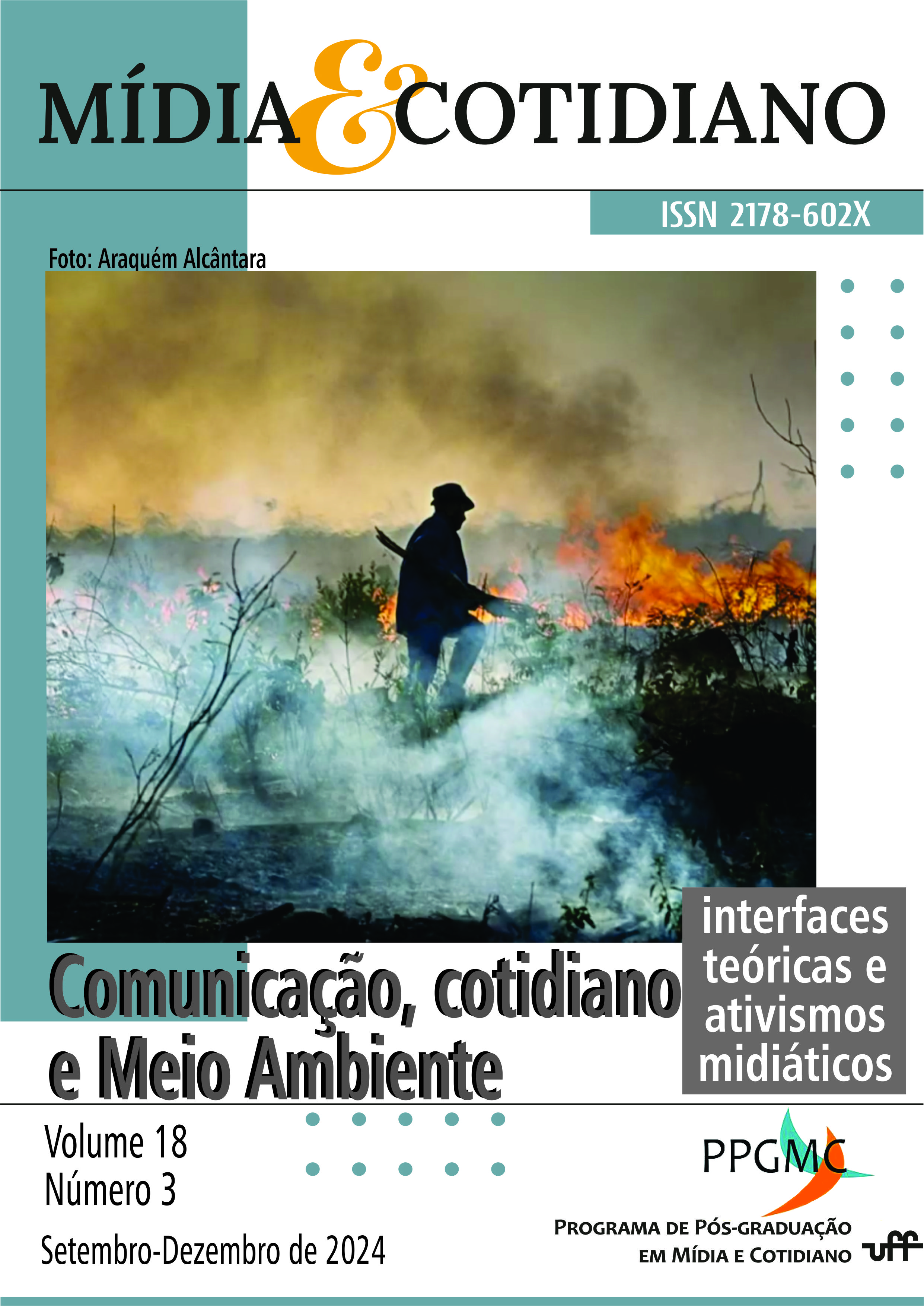Del cielo al infierno con los Fradinhos de Henfil: un análisis sóciossemiótico multimodal
DOI:
https://doi.org/10.22409/rmc.v18i3.60424Palabras clave:
Henfil, O Pasquim, Semiótica social, Historietas, GrotescoResumen
Henfil fue, ante todo, un artista centrado en la crítica de las costumbres, opuesto al sentido común y al moralismo. Este artículo presenta un conjunto de dibujos publicados por Henfil en el periódico O Pasquim, entre febrero y abril de 1970, donde el dibujante elaboró una serie de historietas con el protagonismo de sus personajes Fradinhos, experimentando una vida después de la muerte, del cielo al infierno. Los dibujos henfilianos, caracterizados por trazos rápidos, escenarios simples y líneas sensibles, buscaban exponer los anhelos político-militantes del artista en un período (década de 1970) en que había fiebre por el cómic brasileño, subvirtiendo las narrativas gráficas del cómic tradicional en los Estados Unidos. Henfil no hizo dibujos tristes, sino agresivos, que retrataban la realidad (quizás aún más agresiva) vivida por el dibujante y otros brasileños durante la dictadura militar (1964 - 1985). En capas más profundas de análisis sociossemiótico multimodal, la esperanza contenida en las tramas es perceptible, más allá del grotesco revoltijo. Una creencia en un cambio en la sociedad, donde los oprimidos podrían vengarse de su opresor. El objetivo de este trabajo es brindar un rescate de la obra de Henfil, así como un análisis sociossemiótico multimodal de los dibujos - y sus elementos grotescos - a partir de la elaboración de un imaginario ante la religión católica.
Descargas
Referencias
BARTHES, Roland. Elementos da Semiologia. São Paulo: Cultrix, 2006.
BAKHTIN, Mikhail. A cultura popular na Idade Média e no Renascimento: O contexto de François Rabelais. São Paulo: Hucitec, 1996.
BELTING, Hans. Antropología de la imagen. Madrid: Katz, 2010.
CIRNE, Moacy. A explosão criativa dos quadrinhos. Petrópolis: Vozes, 1972.
DURAND, Gilbert. O imaginário: Ensaio acerca das ciências e da filosofia da imagem. Rio de Janeiro: Difel, 2004.
EISNER, Will. Quadrinhos e arte sequencial. São Paulo: Martins Fontes, 1995.
FOUCAULT, Michel. Vigiar e punir: Nascimento da prisão. Petrópolis: Vozes, 1987.
FREUD, Sigmund. “O chiste e sua relação com o inconsciente” (1905). In: Obras completas. São Paulo: Companhia das Letras, 2017, vol. 7.
Hemeroteca Digital da Biblioteca Nacional. O Pasquim (1969 - 1991). http://memoria.bn.br/docreader/DocReader.aspx?bib=124745&pagfis=22453.
HENFIL; SOUZA, Tárik de. Como se faz humor político. Petrópolis: Vozes, 1984.
KAYSER, Wolfgang. O grotesco. São Paulo: Perspectiva, 1986.
KRESS, Günther; VAN LEEUWEN, Theo. Reading images: the grammar of visual design. Londres: Routledge, 2006.
MARTINS, Moisés de Lemos. A linguagem, a verdade e o poder - Ensaio de Semiótica Social. Vila Nova de Famalicão: Húmus, 2017.
MÁRQUEZ, Gabriel García. Do amor e outros demônios. São Paulo: Record, 2014.
MORAES, Dênis. O rebelde do traço: A vida de Henfil. Rio de Janeiro: José Olympio, 2016.
ROUDINESCO, Elisabeth. Dicionário de psicanálise. Rio de Janeiro: Zahar, 1998.
SODRÉ, Muniz. PAIVA, Raquel. O império do grotesco. Rio de Janeiro: Mauad, 2002.
VAN LEEUWEN, Theo. Introducing Social Semiotics. Londres, Routledge, 2005.
Descargas
Publicado
Número
Sección
Licencia
Aviso de Direito Autoral Creative Commons
1. Política para Periódicos de Acesso Livre
Autores que publicam nesta revista concordam com os seguintes termos:- Autores mantém os direitos autorais e concedem à revista o direito de primeira publicação, com o trabalho simultaneamente licenciado sob a Licença Creative Commons Attribution que permite o compartilhamento do trabalho com reconhecimento da autoria e publicação inicial nesta revista.
- Autores têm autorização para assumir contratos adicionais separadamente, para distribuição não-exclusiva da versão do trabalho publicada nesta revista (ex.: publicar em repositório institucional ou como capítulo de livro), com reconhecimento de autoria e publicação inicial nesta revista.
- Autores têm permissão e são estimulados a publicar e distribuir seu trabalho online (ex.: em repositórios institucionais ou na sua página pessoal) a qualquer ponto antes ou durante o processo editorial, já que isso pode gerar alterações produtivas, bem como aumentar o impacto e a citação do trabalho publicado (Veja O Efeito do Acesso Livre).


